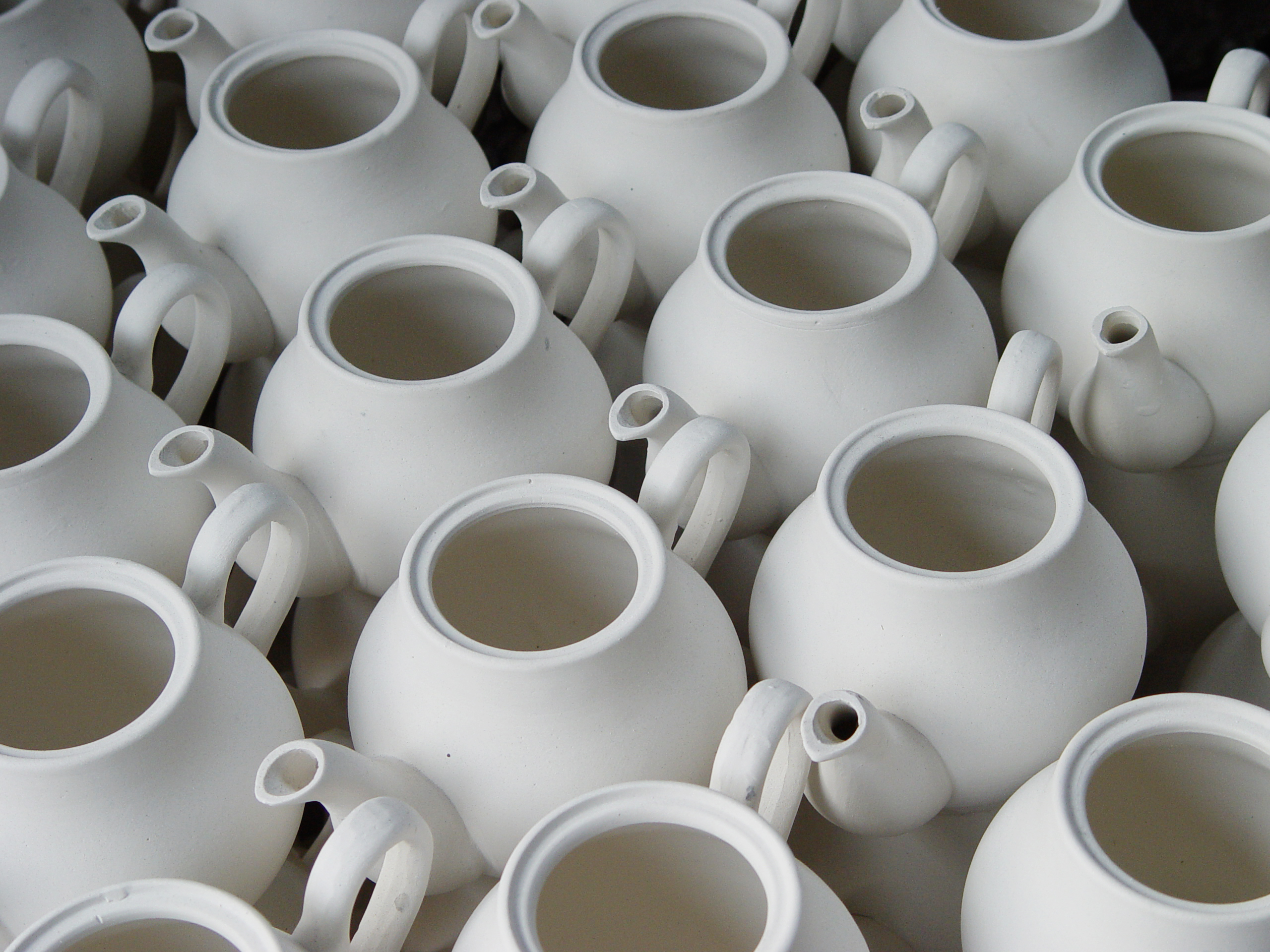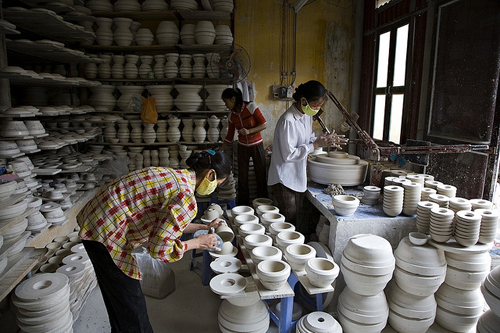News
Delve into the Evolution of Bat Trang Ceramics Techniques
Bat Trang ceramics have long been celebrated as one of Vietnam’s most treasured cultural heritages. Originating from a small village near Hanoi, Bat Trang ceramics exemplify the rich tradition and artistry that have evolved over centuries. This remarkable craft not only represents artistic expression but also reflects the historical and technological progression of ceramic techniques in Vietnam. Exploring the evolution of Bat Trang ceramics offers deep insight into how ancient practices meld with modern innovations, producing works that are both timeless and contemporary.
The Historical Origins of Bat Trang Ceramics

To understand the evolution of Bat Trang ceramics, it is essential first to explore its origins and early development. The village of Bat Trang has been synonymous with ceramics for more than a millennium, with roots tracing back to the 14th century during the Ly and Tran dynasties.
Before delving into the specific techniques, we must appreciate the socio-cultural backdrop that nurtured this traditional craft. Historically, ceramics were crucial in daily life and trade, influencing the production styles and functional designs of Bat Trang potters. The community’s proximity to the Red River facilitated the exchange of ideas and raw materials, which was instrumental in shaping their ceramic techniques.
Early Materials and Clay Sources
The foundation of any ceramic art depends on the quality of raw materials used. Bat Trang’s unique advantage lies in its abundant natural resources—especially the fine white clay found along the banks of the Red River.
This premium clay provided a smooth texture and excellent plasticity, allowing artisans to mold intricate shapes with relative ease. Early potters mastered the selection and preparation of this clay, incorporating a mixture of sand and other organic materials to improve strength and reduce shrinkage during firing.
Understanding these material choices reveals why Bat Trang ceramics could achieve such durability and aesthetic appeal even in their earliest forms. They were not just functional objects but vessels of artistic innovation grounded in natural resource utilization.
Influence of Dynastic Styles and Trade
As the craft matured, Bat Trang ceramics absorbed diverse stylistic influences from Chinese and Southeast Asian traditions due to extensive trade relationships. During the Le and Nguyen dynasties, ceramics production saw significant advancements in technique and ornamentation.
Potters experimented with new glazing techniques—such as the application of celadon and cobalt blue underglaze—giving rise to distinctive visual identities. These eras marked the beginning of what many consider the “golden age” of Bat Trang ceramics, where technical skill aligned perfectly with aesthetic sophistication.
This interplay between foreign influence and local ingenuity produced a unique style recognizable in today’s antique collections. It also set the standard for continual innovation, inspiring future generations to refine traditional methods further.
Traditional Kiln Technologies
Early Bat Trang ceramicists used dragon kilns, an ancient Vietnamese technology characterized by long tunnel-like structures built on slopes. These kilns enabled high-temperature firings essential for vitrifying clay and stabilizing glazes.
Managing these kilns required expertise as the temperature control directly affected the final product’s quality. Mastery over firing cycles allowed artisans to produce ceramics with varied textures—ranging from matte finishes to glossy surfaces.
Examining these kiln technologies highlights how technical knowledge intertwined with artisanal craftsmanship, showcasing the complexity behind what might appear as simple pottery. The gradual refinement of kiln design paralleled improvements in ceramic quality and output.
Traditional Techniques and Art Forms in Bat Trang Ceramics

Bat Trang ceramics encompass a wide spectrum of forms and decorative techniques developed through centuries of experimentation and cultural evolution. The artistry involved is not just about shaping clay but also about storytelling through motifs, glaze chemistry, and finishing touches.
In this section, we delve into the hallmark traditional methods that define Bat Trang ceramics, illuminating how each contributes to the overall craftsmanship and cultural resonance of these ceramics.
Handbuilding and Throwing Methods
The fundamental process of forming Bat Trang pottery traditionally combined handbuilding with wheel-throwing techniques. While handbuilding allowed for creative freedom in shaping complex forms like figurines and ritual objects, the potter’s wheel was essential for producing symmetrical vessels such as bowls, vases, and plates.
Skilled artisans showed remarkable dexterity in manipulating clay to create thin walls without compromising strength. This delicate balance required years of apprenticeship and intimate familiarity with the clay’s behavior at different moisture levels.
The synergy between handbuilding and throwing techniques reflects the artisans’ adaptability and commitment to preserving heritage while pushing technical boundaries. It also symbolizes the transmission of knowledge across generations within Bat Trang’s tightly knit community.
Glazing and Decoration Techniques
Glazing represents one of the most visually striking elements of Bat Trang ceramics. Artisans mastered various glaze compositions, ranging from transparent celadon to vibrant colored glazes, often imbued with symbolic meanings.
Decoration incorporated incised patterns, slip painting, and relief techniques to enhance surface texture. Common motifs included lotus flowers, dragons, phoenixes, and traditional geometric patterns, each carrying cultural significance.
Many examples show the use of cobalt oxide to create striking blue underglaze decorations, a technique influenced by Chinese porcelain yet adapted uniquely by Bat Trang potters. The layering of glazes and careful firing schedules ensured brilliant color retention and glaze stability.
The creative use of glaze chemistry demonstrates a sophisticated understanding of materials science blended seamlessly with artistic vision.
Firing Processes and Temperature Control
Firing remains a critical step that transforms fragile clay objects into durable ceramics. Traditional Bat Trang potters employed wood-fired kilns, requiring intense labor and precision to maintain consistent temperatures throughout the kiln chamber.
Temperature control was vital because underfiring resulted in weak ceramics, while overfiring caused warping or glaze defects. Potters relied on sensory cues and experience rather than modern instruments to judge heat levels.
Different firing atmospheres—oxidizing versus reducing—were utilized to affect glaze colors and surface finishes. This nuanced control over firing conditions exemplifies the empirical knowledge passed down through masters.
These processes underscore the blend of art and science intrinsic to Bat Trang ceramics, where human intuition complements manual skill.
Technological Innovations and Modern Adaptations

While deeply rooted in tradition, Bat Trang ceramics have not remained static. The evolving demands of contemporary markets and advances in technology have driven artisans and manufacturers to integrate new techniques, materials, and processes without losing their cultural identity.
This section explores the ways Bat Trang ceramics have transformed in the modern era, highlighting how innovation serves as both a preservation and expansion of tradition.
Mechanization and Mass Production
The 20th century brought increased mechanization to Bat Trang’s ceramic industry. Introduction of electric potter’s wheels, mechanized clay mixers, and electric kilns enhanced productivity and consistency.
These tools reduced labor intensity and allowed for larger scale production to meet growing domestic and international demand. However, mechanization posed challenges in maintaining the handcrafted essence that defines Bat Trang ceramics.
Artisans needed to balance efficiency with craftsmanship, sometimes using machines for initial shaping followed by hand-finishing for details and decoration. This hybrid approach preserved artistic integrity while benefiting from technological progress.
The integration of machinery showcases how tradition can coexist with modern manufacturing techniques to ensure economic sustainability.
New Materials and Experimental Glazes
Contemporary Bat Trang ceramists experiment extensively with new clays, glazes, and additives to expand their creative palette. Incorporation of synthetic pigments and environmentally friendly materials reflects global trends in sustainable production.
Experimental glazes—including metallic finishes, crackle effects, and matte surfaces—offer fresh aesthetic possibilities beyond classical forms. Some artists draw inspiration from abstract art and contemporary design movements, blending old and new seamlessly.
These innovations enrich Bat Trang ceramics’ market appeal and demonstrate the artisans’ willingness to evolve without severing ties to their heritage.
The exploration of materials science alongside artistic experimentation positions Bat Trang ceramics at the forefront of cultural innovation.
Digital Design and Marketing
Recent decades have seen digital technologies impact not only production but also marketing and distribution of Bat Trang ceramics. Computer-aided design (CAD) enables precise pattern creation and prototype modeling, optimizing workflow and reducing waste.
Social media platforms and e-commerce have expanded Bat Trang ceramics’ visibility globally, connecting artisans directly with consumers and collectors. This digital transformation helps preserve traditional knowledge and disseminate it to wider audiences.
Moreover, virtual exhibitions and online tutorials contribute to education and appreciation of Bat Trang ceramics’ cultural value.
Digital tools thus represent a powerful ally in sustaining and promoting this ancient craft in the 21st century.
Cultural Significance and Artistic Expression in Bat Trang Ceramics
Beyond technical mastery, Bat Trang ceramics serve as profound expressions of Vietnamese identity, spirituality, and aesthetic philosophy. Each piece carries embedded stories, symbolism, and historical memory that resonate culturally and artistically.
Understanding this aspect enriches our appreciation by framing Bat Trang ceramics not merely as artifacts but as living cultural narratives.
Symbolism and Motifs in Ceramic Art
The motifs decorating Bat Trang ceramics are steeped in symbolism related to nature, mythology, and social values. For instance, the lotus flower symbolizes purity and enlightenment, while dragons signify power and protection.
These symbols connect everyday objects to broader spiritual beliefs and communal aspirations. The repetitive use of certain patterns also reflects continuity and reverence for ancestors.
This iconography transforms ceramics into meaningful communicative mediums, linking past and present through visual language.
The deliberate choice and execution of these motifs reveal the artisans’ deep cultural sensitivity and intellectual engagement.
Ceramics in Ritual and Daily Life
Historically, Bat Trang ceramics were integral to both sacred rituals and mundane activities. Items like incense burners, altar vessels, and worship cups played roles in religious ceremonies, reflecting the spiritual dimension of pottery.
Simultaneously, utilitarian wares such as jars, plates, and teapots illustrate how ceramics permeated daily life, grounding aesthetics in functionality. This dual purpose underscores the holistic worldview where art and life are inseparable.
Studying these applications broadens our understanding of Bat Trang ceramics as dynamic cultural artifacts embedded in lived experience.
It also emphasizes the enduring relevance of traditional crafts in contemporary contexts.
Contemporary Artistic Interpretations
Modern Bat Trang artists continue to reinterpret traditional themes, experimenting with form, scale, and mixed media. Installations, sculptures, and conceptual works challenge conventions and invite dialogue on cultural identity and globalization.
This artistic evolution fosters renewed interest among younger generations and international art communities. It positions Bat Trang ceramics as both heritage preservation and avant-garde exploration.
Through these contemporary lenses, Bat Trang ceramics transcend their utilitarian origins to become vehicles for personal and collective expression.
This dynamic interplay between tradition and innovation captures the spirit of ongoing artistic vitality.
Preservation Challenges and Future Prospects for Bat Trang Ceramics
Despite its rich legacy, Bat Trang ceramics face multiple challenges in preservation and sustainability amid rapid modernization and commercial pressures. Understanding these issues is crucial for developing strategies to safeguard this invaluable cultural asset.
This section investigates current threats and potential solutions to ensure the continued flourishing of Bat Trang ceramics.
Environmental and Economic Pressures
The increased demand for raw materials coupled with environmental degradation poses significant risks to local clay sources. Unsustainable extraction can lead to resource depletion, affecting quality and availability.
Economic competition from low-cost imports also challenges Bat Trang artisans, forcing compromises in material quality or craftsmanship to maintain profitability.
Balancing ecological stewardship with economic viability requires coordinated efforts involving local authorities, craftsmen, and consumers.
Sustainable resource management is imperative to protect the foundations of Bat Trang ceramics production.
Loss of Traditional Skills
Younger generations increasingly migrate to urban areas or pursue alternative careers, leading to a decline in the transmission of traditional skills and knowledge.
Master-apprentice systems are weakened, threatening the survival of specialized techniques such as kiln firing or intricate hand-painting.
Addressing this issue demands educational programs, vocational training, and incentives to attract youth back to the craft.
Preserving intangible cultural heritage is as critical as protecting physical artifacts.
Strategies for Conservation and Innovation
Efforts to conserve Bat Trang ceramics involve documentation, museum exhibitions, and collaboration with cultural institutions. Recognition by UNESCO or national heritage organizations can provide legal protections and funding.
At the same time, supporting innovation through grants and workshops encourages artisans to develop new products that appeal to contemporary markets while respecting tradition.
Community-based tourism initiatives promote cultural exchange and economic development, raising awareness and appreciation internationally.
A balanced approach embracing both preservation and progress will secure the future of Bat Trang ceramics.
Table: Key Milestones in the Evolution of Bat Trang Ceramics
| Period | Major Developments | Notable Techniques | Cultural Influences |
|---|---|---|---|
| 14th-15th Century | Establishment of Bat Trang village as pottery hub | Use of natural white clay | Indigenous Vietnamese styles |
| 16th-18th Century | Introduction of celadon and cobalt blue glazes | Dragon kiln firing | Chinese Ming dynasty influences |
| 19th Century | Expansion of decorative motifs and export growth | Advanced wheel-throwing | Increased Southeast Asian trade |
| 20th Century | Mechanization and mass production | Electric wheel, electric kiln | Colonial and industrial impacts |
| 21st Century | Integration of digital design and experimental glazes | CAD, synthetic pigments | Globalization and modern art fusion |
Conclusion
The evolution of Bat Trang ceramics illustrates a captivating journey through history, culture, and technology. From its humble beginnings with locally sourced clays and traditional handcrafting methods, Bat Trang ceramics have continually adapted to changing times by integrating new techniques, artistic influences, and modern technologies. This dynamic interplay ensures that Bat Trang ceramics remain vibrant cultural treasures that honor their past while embracing the future. Preserving this craft requires a thoughtful balance of conserving traditional knowledge, fostering innovation, and addressing contemporary challenges. Ultimately, Bat Trang ceramics stand as a testament to the resilience and creativity of Vietnamese artisans, embodying a living heritage that enriches both local identity and global appreciation.
